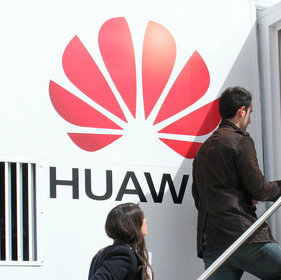Huawei says the updated OS can currently support IoT devices with RAM of up to 128MB, such as smart TVs, wearables and cars.

Huawei has launched the new version of its Harmony operating system, declaring it will be ready for smartphones next year.
HarmonyOS 2.0 was unveiled at the annual Huawei Developer Conference held at the company's Dongguan campus on Thursday.
Announcing the upgrade, Richard Yu, CEO of Huawei's consumer business group, said the OS can currently support IoT devices with RAM of up to 128MB, such as smart TVs, wearables and cars.
"In April 2021, we will open it to 128MB-4GB devices and in October 2021, HarmonyOS will be opened for devices above 4GB," he said.
It will be made available to non-Huawei device-makers as well, he said.
Originally envisaged for small IoT devices, HarmonyOS was launched at last year's developer event.
Yu said HarmonyOS will be open source, with the code donated to the China Open Atomic Open Source Foundation.
"We want to create a fully open ecosystem for developers and partners," he said.
He also announced the latest Huawei Mobile Services (HMS), the alternative to Google's application suite.
Since its debut a year ago the number of HMS APIs has increased from 885 to nearly 13,000.
Yu says HMS is backed by 1.8 million developers worldwide, up from 800,000 a year ago, making it the world's third-largest mobile ecosystem behind Android and Apple iOS. Yu did not disclose the split between China and non-China developers.
HMS achieved 261 billion app downloads and distributions between January and August 2020, while the AppGallery has more than 96,000 apps and more than 490 million global active users.
The HiLink solution for IoT has 50 million active users "contributing more than 1 billion all-scenario device interaction requests every day," with the SmartLife IoT app downloaded 400 million times, Huawei said in a statement.
The vendor said it was committed to fully opening its core software and hardware capabilities.
"Huawei has opened up core software services, such as browsing, search, map, payment, advertising kits, to accelerate innovation in app development.
"Huawei has also opened up hardware capabilities such as its camera, AR map capabilities, communication and transmission tools, as well as its leading privacy and security protection capabilities."
To support its global developer program, the company is planning new laboratories in Germany, Poland and Russia, and developer service centers in Romania, Russia, Egypt, Mexico and Malaysia.
Despite the US supply bans, the Huawei consumer unit hiked sales by 15.9% in the first half to 255.8 billion yuan ($37.4 billion).
While smartphone shipments fell 11% to 105 million due to the pandemic, Huawei became the world's biggest handset supplier in the period.
Related posts:
— Robert Clark, contributing editor, special to Light Reading
Read more about:
AsiaAbout the Author(s)
You May Also Like











